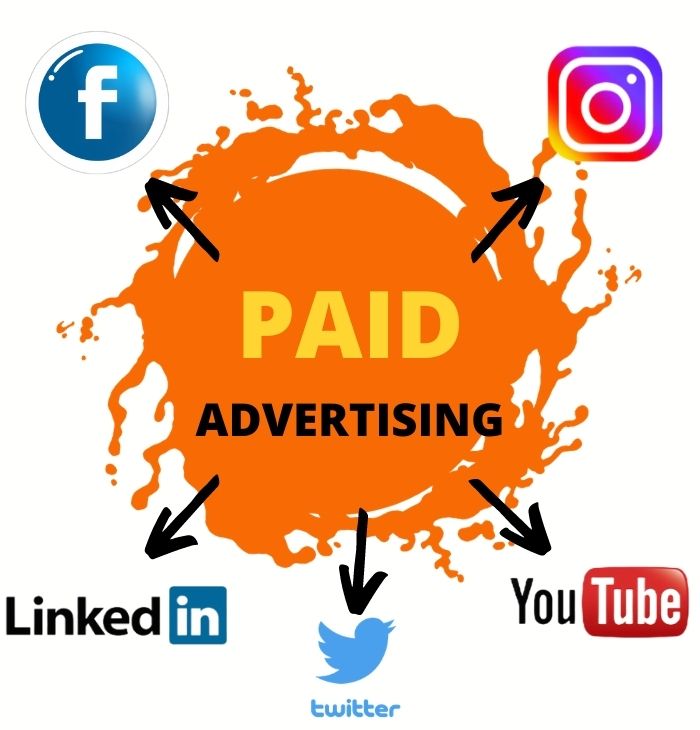The Power of Paid Social Advertising: A Strategic Guide for Modern Marketers
Understanding Paid Social Advertising
Paid social advertising represents a targeted approach to digital promotion where businesses invest in sponsored content across social platforms. These strategically placed advertisements appear on networks like Facebook, Instagram, LinkedIn, and TikTok, offering precise audience targeting that goes beyond organic reach limitations.
Unlike traditional advertising methods, paid social campaigns provide:
Laser-focused audience segmentation
Real-time performance tracking
Flexible budget controls
Multi-format creative options
This advertising model operates on either a pay-per-click (PPC) or cost-per-thousand-impressions (CPM) basis, giving marketers transparent control over their investment returns. The ability to micro-target specific demographics while measuring immediate impact makes paid social an indispensable tool in the modern marketing arsenal.
Core Components of Effective Paid Social Campaigns
Precision Audience Targeting
• Specific interests and affinities
• Online behaviors and purchase intent signals
• Retargeting website visitors or existing customers
Diverse Advertising Formats
• Engaging video content for storytelling
• Interactive carousels for product showcases
• Instant experience ads for mobile engagement
• Lead generation forms for customer acquisition
Real-Time Performance Optimization
Flexible Budget Management
• Customizable bidding strategies
• Dayparting scheduling options
• Automated budget optimization
Advanced Retargeting Capabilities
Modern social platforms offer unprecedented targeting capabilities that allow advertisers to reach their ideal customers with surgical precision. Marketers can segment audiences based on:
Detailed demographic filters (age, location, gender)
This granular approach ensures marketing dollars are spent efficiently, reaching only the most relevant potential customers rather than wasting impressions on uninterested audiences.
Social platforms support a rich ecosystem of ad formats to match different campaign objectives:
Static image ads for brand awareness
This variety enables brands to select the perfect format for their specific goals, whether that's driving website traffic, generating leads, or boosting product sales.
Paid social platforms provide comprehensive analytics dashboards that track:
Engagement rates and click-through performance
Conversion metrics and cost-per-acquisition
Audience demographic breakdowns
Return on ad spend (ROAS) calculations
These insights empower marketers to make data-driven adjustments, pausing underperforming ads and scaling successful ones to maximize campaign efficiency.
Social advertising accommodates businesses of all sizes with:
Adjustable daily or lifetime budgets
This flexibility allows both startups and enterprises to control their spending while efficiently scaling high-performing campaigns.
Social platforms enable sophisticated remarketing to:
Website visitors who didn't convert
Engagers of previous content
Past customers for repeat business
Lookalike audiences with similar traits
This powerful feature significantly improves conversion rates by keeping brands top-of-mind with warm leads.
The Strategic Importance of Paid Social Advertising
Accelerated Business Growth
With organic reach declining (Facebook page posts now reach just 2-6% of followers), paid social provides guaranteed visibility. Case studies show businesses achieving in weeks through paid social what might take months or years organically.
Superior Conversion Performance
Paid social drives direct, measurable actions with conversion rates typically 2-3x higher than organic content. The combination of precise targeting and compelling ad creative delivers exceptional results across:
• E-commerce sales
• Lead generation
• App installs
• Event registrations
Actionable Audience Insights
Campaign analytics provide deep understanding of:
Highest-converting demographics
Most effective messaging
Optimal posting times
Content format preferences
These insights inform both paid and organic strategies for continuous improvement.
Competitive Market Positioning
In crowded industries, paid social helps brands:
Outmaneuver competitors in news feeds
Retarget competitor audiences
Test and iterate messaging faster
Dominate share of voice
Scalable Customer Acquisition
From small local businesses to global enterprises, paid social offers:
• Low-barrier entry points
• Predictable scaling models
• Geographic expansion capabilities
• Seasonal campaign flexibility
Implementing a Winning Paid Social Strategy
To maximize results from paid social advertising:
Define clear objectives (awareness, conversions, etc.)
Select the most appropriate platforms for your audience
Develop platform-specific creative assets
Start with controlled test budgets
Analyze and optimize based on performance data
Scale winning campaigns while testing new approaches
The Future of Paid Social Advertising
AI-powered ad optimization
Augmented reality ad experiences
Shoppable social commerce ads
Predictive audience targeting
Voice-activated social ads



Comments
Post a Comment